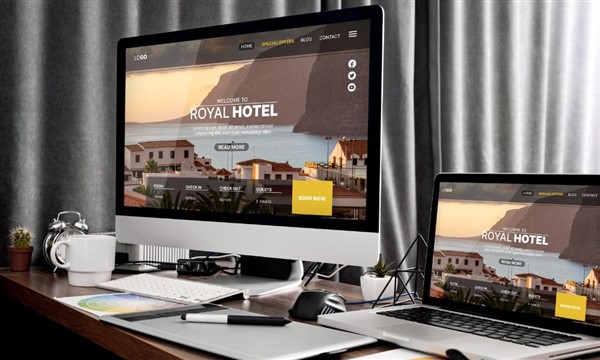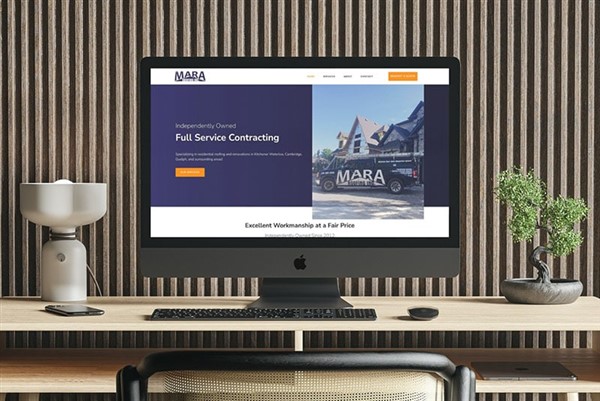“`html
body {
font-family: Arial, sans-serif;
line-height: 1.6;
margin: 20px;
}
h1, h2, h3 {
color: #333;
}
a {
color: #007bff;
text-decoration: none;
}
a:hover {
text-decoration: underline;
}
ul {
list-style-type: disc;
margin-left: 20px;
}
Best Place To Learn Web Design Nairobi Kenya
Are you eager to break into the exciting world of web design? Finding the Best Place To Learn Web Design Nairobi Kenya can be a game-changer for your career. This article explores the top options available, providing insights into courses, bootcamps, and resources that will equip you with the skills you need to succeed in Nairobi’s thriving tech scene. We’ll guide you through the best choices to help you become a proficient web designer.
Why Nairobi is a Great Place to Learn Web Design

Nairobi is rapidly becoming a tech hub in East Africa. Moreover, the demand for skilled web designers is constantly increasing. This creates fantastic opportunities for those looking to start or advance their careers. The city’s vibrant startup ecosystem and established businesses alike need talented individuals who can create engaging and effective online experiences. Furthermore, Nairobi offers a unique blend of educational resources and real-world opportunities.
The availability of internet access and a growing tech-savvy population makes Nairobi an ideal place to learn web design. Therefore, you can practice your skills and build a portfolio. In addition, numerous meetups and workshops provide networking opportunities with industry professionals. Finally, learning web design in Nairobi positions you at the forefront of technological innovation in the region.
Consider the case of “TechSavvy Solutions,” a local startup that struggled to find qualified web designers. However, after partnering with a training program in Nairobi, they were able to hire skilled graduates. These graduates quickly contributed to improving the company’s online presence, resulting in a 40% increase in website traffic within three months. This demonstrates the tangible benefits of investing in web design education in Nairobi.
Ready to start your web design journey? Explore our web design services and see what we can do for you!
Top Web Design Courses in Nairobi
Several institutions and online platforms offer excellent web design courses in Nairobi. These courses cater to different skill levels and learning preferences. Therefore, it’s crucial to choose a program that aligns with your goals and learning style. Moreover, consider factors like course content, instructor experience, and career support services.
- Bootcamps: Intensive, immersive programs designed to equip you with job-ready skills in a short amount of time.
- University Programs: Formal degree programs that provide a comprehensive understanding of web design principles.
- Online Courses: Flexible and affordable options that allow you to learn at your own pace.
- Vocational Training Centers: Practical, hands-on training focused on specific web design skills.
Bootcamps for Rapid Skill Development

Web design bootcamps are an excellent option if you’re looking for rapid skill development. These programs typically run for several weeks or months. They provide intensive training in essential web design technologies. Moreover, bootcamps often incorporate project-based learning and career coaching to help you land a job after graduation.
A notable example is “Nairobi Tech Academy,” which offers a 12-week web design bootcamp. The curriculum covers HTML, CSS, JavaScript, and responsive design principles. Furthermore, students work on real-world projects and receive personalized mentorship from industry experts. Graduates of Nairobi Tech Academy have been hired by leading companies in Nairobi’s tech sector, demonstrating the effectiveness of this approach.
Consider “CodeHive,” another popular bootcamp in Nairobi. CodeHive focuses on full-stack web development, covering both front-end and back-end technologies. However, their program emphasizes collaborative learning and problem-solving skills. Moreover, CodeHive partners with local businesses to provide internship opportunities for their students. This allows them to gain practical experience and build their professional networks.
Interested in getting started quickly? Contact us to learn more about web design training options.
University Programs: A Comprehensive Approach
For those seeking a more comprehensive understanding of web design, university programs are an excellent choice. These programs typically lead to a bachelor’s degree in computer science, graphic design, or a related field. Moreover, they provide a strong foundation in web design principles, as well as broader knowledge in areas like software development and user experience design.
The University of Nairobi offers a Bachelor of Science in Computer Science with a specialization in web development. The curriculum covers a wide range of topics. These include programming languages, database management, and web application development. Furthermore, students have the opportunity to participate in research projects and internships, enhancing their practical skills.
Another option is Strathmore University, which offers a Bachelor of Science in Informatics and Computer Science. This program emphasizes the application of technology to solve real-world problems. However, students learn about web design, mobile app development, and data analytics. Moreover, Strathmore University has strong industry connections, providing students with access to internships and job opportunities.
Choosing a university program offers a structured learning environment and a recognized qualification. However, it requires a significant time commitment and financial investment. Therefore, consider your long-term career goals and learning preferences before making a decision.
Key Skills You’ll Learn in Web Design Courses

Web design courses in Nairobi will equip you with a variety of essential skills. These skills are necessary for creating visually appealing and functional websites. Moreover, mastering these skills will make you a valuable asset to any organization.
- HTML (HyperText Markup Language): The foundation of all websites, used to structure content.
- CSS (Cascading Style Sheets): Used to style and format the visual appearance of websites.
- JavaScript: A programming language that adds interactivity and dynamic behavior to websites.
- Responsive Design: Creating websites that adapt seamlessly to different screen sizes and devices.
- UI/UX Design: Designing user-friendly and engaging interfaces that provide a positive user experience.
- Graphic Design Principles: Understanding visual hierarchy, typography, and color theory.
HTML and CSS: Building the Foundation
HTML and CSS are the building blocks of web design. HTML provides the structure and content of a website, while CSS controls its visual presentation. Moreover, mastering these two technologies is essential for any aspiring web designer.
HTML allows you to create headings, paragraphs, images, and links. CSS enables you to style these elements, control their layout, and create a consistent look and feel across your website. Furthermore, understanding how to use HTML and CSS effectively is crucial for creating accessible and search engine-friendly websites.
Consider the example of a simple webpage with a heading, paragraph, and image. Using HTML, you would define the structure of the page using elements like `
`, `
`, and ``. Using CSS, you would style these elements by setting their font size, color, and positioning. However, without CSS, the webpage would look plain and unappealing.
Ready to learn the basics? Contact us for introductory web design resources.
JavaScript: Adding Interactivity
JavaScript is a powerful programming language that adds interactivity and dynamic behavior to websites. It allows you to create animations, handle user input, and communicate with servers. Moreover, JavaScript is essential for building modern, engaging web applications.
With JavaScript, you can create interactive forms, slideshows, and games. You can also use it to fetch data from external sources and update the content of your webpage without requiring a full page reload. Furthermore, JavaScript frameworks like React, Angular, and Vue.js are widely used in the industry for building complex web applications.
Imagine a website with a form that validates user input in real-time. Using JavaScript, you can check if the user has entered a valid email address or password before submitting the form. However, without JavaScript, you would need to rely on server-side validation, which is less responsive and can provide a poorer user experience.
Responsive Design: Adapting to Different Devices
Responsive design is the practice of creating websites that adapt seamlessly to different screen sizes and devices. With the increasing use of mobile devices, it’s crucial to ensure that your website looks and functions well on smartphones, tablets, and desktops. Moreover, responsive design is a key factor in providing a positive user experience.
Responsive design techniques involve using CSS media queries to apply different styles based on the screen size. You can also use flexible layouts and images that scale automatically to fit the screen. Furthermore, responsive design is not only important for user experience but also for search engine optimization. Google favors websites that are mobile-friendly.
Consider a website that looks great on a desktop computer but is difficult to navigate on a smartphone. The text may be too small to read, the buttons may be too close together, and the layout may be distorted. However, with responsive design, the website would automatically adjust its layout and styling to provide an optimal viewing experience on any device.
Choosing the Right Web Design Course in Nairobi
Selecting the right web design course in Nairobi requires careful consideration. Several factors can influence your learning experience and career prospects. Moreover, it’s important to evaluate your goals, learning style, and budget before making a decision.
- Course Content: Ensure that the course covers the essential web design skills you need.
- Instructor Experience: Look for instructors with industry experience and a proven track record.
- Career Support: Check if the course offers career counseling, job placement assistance, or internship opportunities.
- Learning Style: Choose a course that aligns with your preferred learning style, whether it’s hands-on, theoretical, or a combination of both.
- Cost and Duration: Consider your budget and the time commitment required for the course.
Consider Your Career Goals

Your career goals should be a primary factor in choosing a web design course. Are you looking to become a freelance web designer, work for a web design agency, or join a tech company? Moreover, different career paths require different skill sets and training.
If you want to become a freelance web designer, you’ll need to learn not only web design skills but also business skills like marketing, sales, and project management. However, if you want to work for a web design agency, you’ll need to be proficient in a variety of web design technologies and be able to work effectively in a team.
For example, if you aspire to specialize in e-commerce website design, prioritize courses that cover platforms like Shopify and WooCommerce. If your interest lies in user experience (UX) design, seek out courses that delve into user research, wireframing, and usability testing. Therefore, aligning your training with your specific career aspirations will increase your chances of success.
Evaluate Instructor Experience and Credentials
The quality of the instructors can significantly impact your learning experience. Look for instructors with industry experience and a proven track record of success. Moreover, check their credentials and read reviews from previous students.
Experienced instructors can provide valuable insights into the real-world challenges of web design. They can also share best practices and tips that you won’t find in textbooks. Furthermore, instructors with strong industry connections can help you network and find job opportunities.
Consider instructors who have worked on notable projects or have received recognition for their work. Look for instructors who are passionate about teaching and are committed to helping their students succeed. However, don’t hesitate to reach out to instructors and ask them about their experience and teaching philosophy.
Resources for Web Design Learners in Nairobi
In addition to formal courses, there are many resources available for web design learners in Nairobi. These resources can help you supplement your training, stay up-to-date with the latest trends, and connect with other web designers. Moreover, taking advantage of these resources can significantly enhance your learning experience.
- Online Tutorials and Documentation: Websites like MDN Web Docs and W3Schools provide comprehensive documentation and tutorials on web design technologies.
- Online Communities and Forums: Platforms like Stack Overflow and Reddit offer forums where you can ask questions and get help from other web designers.
- Local Meetups and Workshops: Organizations like Nairobi Tech Community and iHub host regular meetups and workshops on web design and related topics.
- Design Blogs and Publications: Websites like Smashing Magazine and A List Apart publish articles on web design trends, best practices, and case studies.
Leveraging Online Tutorials and Documentation
Online tutorials and documentation are invaluable resources for web design learners. Websites like MDN Web Docs and W3Schools provide comprehensive information on HTML, CSS, JavaScript, and other web design technologies. Moreover, these resources are free and accessible to anyone with an internet connection.
MDN Web Docs is a collaborative project maintained by Mozilla, the organization behind the Firefox web browser. It provides detailed documentation on web standards and technologies. Furthermore, W3Schools offers interactive tutorials and examples that allow you to learn by doing.
When you encounter a problem or need to learn a new concept, start by consulting these online resources. However, they often provide clear explanations, code examples, and troubleshooting tips. Moreover, using online tutorials and documentation can help you become a self-sufficient and resourceful web designer.
Joining Local Meetups and Workshops
Local meetups and workshops are a great way to connect with other web designers, learn new skills, and stay up-to-date with the latest trends. Organizations like Nairobi Tech Community and iHub host regular events on web design and related topics. Moreover, attending these events can provide valuable networking opportunities and insights.
Meetups typically involve presentations, discussions, and networking sessions. Workshops provide hands-on training on specific web design skills. Furthermore, attending these events can help you build your professional network, learn from experienced designers, and discover new tools and techniques.
Consider attending a workshop on responsive design or a meetup on the latest JavaScript frameworks. These events can provide practical knowledge and valuable connections. However, check the websites of local tech communities and co-working spaces to find upcoming events.
FAQs About Best Place To Learn Web Design Nairobi Kenya
Here are some frequently asked questions about learning web design in Nairobi. These questions address common concerns and provide helpful information for aspiring web designers. Moreover, understanding these FAQs can help you make informed decisions about your education and career.
Q: What are the basic skills needed to start learning web design?
A: The basic skills needed to start learning web design include a basic understanding of computers, internet navigation, and a willingness to learn. No prior programming experience is required. However, familiarity with graphic design principles can be helpful. Moreover, a strong foundation in HTML, CSS, and JavaScript is essential for building websites.
Q: How long does it take to become a proficient web designer?
A: The time it takes to become a proficient web designer varies depending on your learning style, dedication, and the resources you use. A web design bootcamp might take 3-6 months to complete. However, a university degree can take 3-4 years. Consistent practice and continuous learning are key to mastering web design skills. Moreover, building a portfolio of projects is crucial for showcasing your abilities.
Q: What are the job prospects for web designers in Nairobi?
A: The job prospects for web designers in Nairobi are excellent. The demand for skilled web designers is growing rapidly as more businesses establish an online presence. However, opportunities exist in web design agencies, tech companies, startups, and as freelance web designers. Moreover, networking and building a strong portfolio can significantly improve your chances of landing a job.
Q: How much does it cost to learn web design in Nairobi?
A: The cost of learning web design in Nairobi varies depending on the type of course and the institution. Online courses can range from a few thousand shillings to tens of thousands. Web design bootcamps can cost several hundred thousand shillings. However, university programs can cost even more. Moreover, consider the cost of materials, software, and other resources when budgeting for your web design education.
Q: Which web design tools and software are essential to learn?
A: Essential web

